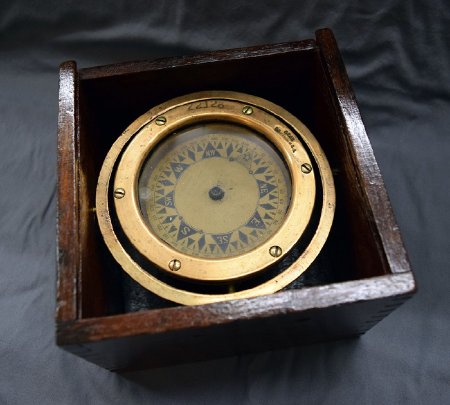Description:
Compass for Marine Navigation
Before technological advances like GPS and radar, the compass provided people with an easy and inexpensive way to orient themselves. The earliest compasses appeared in Ancient China and were used for surveying and in fortune telling. Only later were compasses adopted as navigational aids. Mariner's compasses were typically more reliable than those used on land and allowed for extended sailing seasons and safer sea travel.
By the early 1800s, Boston, Massachusetts had become the compass center of the world for developing the spirit magnetic or liquid-filled compass. This month's featured artifact is a troller's compass from the Star Compass Company of Boston. The outfit began manufacturing on a small scale in 1905, using only human-powered equipment like foot treadles. Because of their strong emphasis on craftsmanship and high quality, Star compasses became extremely popular and were used all over the United States, including Alaska. Over time, the company developed a line of 18 different sizes suitable for the smallest sailing vessels to the largest ocean-going steamers.
In a modern ship's compass, like our featured artifact, the compass card is attached to a float with magnetic needles and spins freely inside a glass bowl filled with a mixture of alcohol and water to minimize friction and absorb vibrations from the moving ship. The compass is housed in a dovetailed box and mounted on gimbals (pivots) to keep it horizontal even when the ship is pitching and rolling in the waves. The compass in the Ketchikan Museums' collection was purchased at an estate sale of a local troller. Before being donated, the compass was carefully cleaned and was resealed with windshield gasket. The original lid was lost and a new lid was custom-made to fit the box.
Ketchikan Museums, KM 2015.2.16.1 A&B

